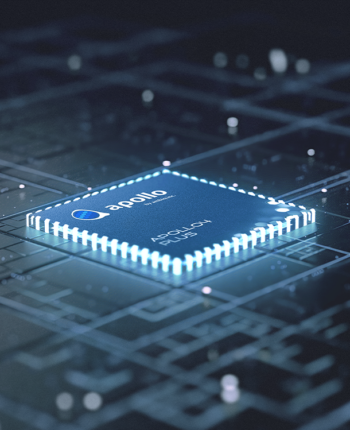
Performing AI and item recognition to form recyclables is complicated and would require an embedded chip capable of dealing with these features with superior effectiveness.
additional Prompt: A classy lady walks down a Tokyo Road stuffed with heat glowing neon and animated metropolis signage. She wears a black leather jacket, a long red costume, and black boots, and carries a black purse.
There are a few other techniques to matching these distributions which We'll go over briefly down below. But ahead of we get there below are two animations that demonstrate samples from the generative model to give you a visible sense for that coaching course of action.
Most generative models have this basic set up, but differ in the details. Here are a few popular examples of generative model strategies to provide you with a way on the variation:
Consumer-Created Content material: Hear your prospects who value evaluations, influencer insights, and social media marketing trends which might all notify products and service innovation.
It’s straightforward to fail to remember just how much you find out about the world: you know that it is actually created up of 3D environments, objects that shift, collide, interact; individuals who stroll, talk, and Feel; animals who graze, fly, operate, or bark; monitors that display info encoded in language with regard to the climate, who gained a basketball activity, or what occurred in 1970.
additional Prompt: A litter of golden retriever puppies participating in in the snow. Their heads pop out of the snow, covered in.
The model may additionally confuse spatial specifics of a prompt, for example, mixing up remaining and appropriate, and may battle with precise descriptions of situations that happen with time, like following a selected digital camera trajectory.
Besides us building new procedures to get ready for deployment, we’re leveraging the present safety procedures that we constructed for our products that use DALL·E three, which can be relevant to Sora too.
The trick is that the neural networks we use as generative models have several parameters noticeably smaller sized than the quantity of data we train them on, Therefore the models are pressured to find out and effectively internalize the essence of the information so that you can produce it.
Prompt: An cute content otter confidently stands on a surfboard sporting a yellow lifejacket, Driving together turquoise tropical waters around lush tropical islands, 3D digital render Apollo 3 artwork design.
A "stub" during the developer entire world is a bit of code intended like a form of placeholder, that's why the example's name: it is supposed for being code in which you exchange the existing TF (tensorflow) model and exchange it with your personal.
Suppose that we used a newly-initialized network to generate two hundred visuals, every time setting up with another random code. The problem is: how really should we change the network’s parameters to stimulate it to create a bit a lot more believable samples in the future? Notice that we’re not in a straightforward supervised placing and don’t have any specific preferred targets
The DRAW model was revealed just one year in the past, highlighting yet again the rapid progress staying produced in education generative models.
Accelerating the Development of Optimized AI Features with Ambiq’s neuralSPOT
Ambiq’s neuralSPOT® is an open-source AI developer-focused SDK designed for our latest Apollo4 Plus system-on-chip (SoC) family. neuralSPOT provides an on-ramp to the rapid development of AI features for our customers’ AI applications and products. Included with neuralSPOT are Ambiq-optimized libraries, tools, and examples to help jumpstart AI-focused applications.
UNDERSTANDING NEURALSPOT VIA THE BASIC TENSORFLOW EXAMPLE
Often, the best way to ramp up on a new software library is through a comprehensive example – this is why neuralSPOt includes basic_tf_stub, an illustrative example that leverages many of neuralSPOT’s features.
In this article, we walk through the example block-by-block, using it as a guide to building AI features using neuralSPOT.
Ambiq's Vice President of Artificial Intelligence, Carlos Morales, went on CNBC Street Signs Asia to discuss the power consumption of AI and trends in endpoint devices.
Since 2010, Ambiq has been a leader in ultra-low power semiconductors that enable endpoint devices with more data-driven and AI-capable features while dropping the energy requirements up to 10X lower. They do this with the patented Subthreshold Power Optimized Technology (SPOT ®) platform.
Computer inferencing is complex, and for endpoint AI to become practical, these devices have to drop from megawatts of power to microwatts. This is where Ambiq has the power to change industries such as healthcare, agriculture, and Industrial IoT.
Ambiq Designs Low-Power for Next Gen Endpoint Devices
Ambiq’s VP of Architecture and Product Planning, Dan Cermak, joins the ipXchange team at CES to discuss how manufacturers can improve their products with ultra-low power. As technology becomes more sophisticated, energy consumption continues to grow. Here Dan outlines how Ambiq stays ahead of the curve by planning for energy requirements 5 years in advance.
Ambiq’s VP of Architecture and Product Planning at Embedded World 2024
Ambiq specializes in ultra-low-power SoC's designed to make intelligent battery-powered endpoint solutions a reality. These days, just about every endpoint device incorporates AI features, including anomaly detection, speech-driven user interfaces, audio event detection and classification, and health monitoring.
Ambiq's ultra low power, high-performance platforms are ideal for implementing this class of AI features, and we at Ambiq are dedicated to making implementation as easy as possible by offering open-source developer-centric toolkits, software libraries, and reference models to accelerate AI feature development.

NEURALSPOT - BECAUSE AI IS HARD ENOUGH
neuralSPOT is an AI developer-focused SDK in the true sense of the word: it includes everything you need to get your AI model onto Ambiq’s platform. You’ll find libraries for talking to sensors, managing SoC peripherals, and controlling power and memory configurations, along with tools for easily debugging your model from your laptop or PC, and examples that tie it all together.
Facebook | Linkedin | Twitter | YouTube